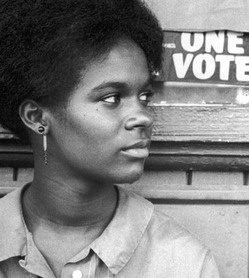Why the 'voter fraud' myth won't die

Most serious political experts know that real, documented voter fraud is an extremely small problem.
When the Department of Justice under President Bush launched a crackdown on fraud in 2002, five years later it only had 86 convictions to show for the effort. That's .00007 percent of the 122 million people [pdf] who voted for president in the 2004 elections.
Even if the DOJ's aggressive efforts only caught 1 percent of the actual fraud going on, it would still be one of the smallest problems facing our electoral system. For example, an MIT study last year found that cracks in our country's patchwork voter registration system kept up to 3 million registered and fully-qualified voters from casting a ballot.
So why does the phantom of voter fraud keep appearing? The biggest reason is that powerful forces with very deep pockets are able to relentlessly push the message. In 2010, independent groups with mysterious millionaire donors -- such as American Majority Action, peddler of a voter fraud iPhone app -- have joined with Tea Party activists, Republicans and media outlets like Fox News to bring hysteria about voter fraud to a fever pitch.
They purveyors of voter fraud fear also have decades of practice. The modern crusade against voter fraud started in the civil rights era of the 1960s, with growing anxieties among white politicians and voters over the growing power of black and urban voters.
As historian Rick Perlstein documents, Republicans tapped into -- and inflamed -- these fears with outrageous claims of black voter fraud, which not only riled up the conservative base, but also laid the groundwork for "anti-fraud" campaigns that could depress Democratic turnout.
In 1964, the Republican National Committee launched "Operation Eagle Eye," which appointed a "ballot security" official in all 50 states and the District of Columbia. (Sidenote: This is also where future Supreme Court Justice William Rehnquist, an aid to Barry Goldwater's presidential campaign, cut his political teeth.)
Here's a description of what the Republican anti-fraud program included:
In one state, Minnesota, 'Operation Ballot Security' issued a seven-page single-space private memorandum detailing a variety of methods for challenging voters at the polls, with instructions to discourage helpful judges in Democratic precincts, to cut off waiting lines in Democratic precincts but not in Republican precincts, and to encourage stalling in Democratic precincts while preventing stalling in Republican precincts.
The Minnesota document goes so far as to state its purpose, not as encouraging each American to exercise his right to vote freely but 'to safeguard the investment of time, money, and effort that the Republican Party, its volunteers, its candidates, and their volunteers have made in this election.
As for specific instructions, the Republican memorandum says: 'If any questions or dispute arises, refer to the pertinent authority cited below and when it is to your party's interest insist that the law be followed."
What's striking is how little the strategy and tactics have changed over the last 46 years. For an October 22, 1964 story in the Wall Street Journal, reporter Stanley Penn asked a "ballot security' activists about his plans:
Penn quoted one 'ballot security' official as saying he planned to equip his poll watchers with cameras to frighten people into believing that voting irregularities can be photographed. He wrote: "The official notes that even if poll watchers don't now how to use the cameras, potential Democratic wrong-doers may be frightened off."
Today the favored tools are video cameras and iPhone apps -- but they're still taking pictures to confuse and intimidate voters, too.
Less than a month before Election Day in 1962, a Republican group in Detroit called "The Committee for Honest Elections" rolled out some other familiar tactics:
* Mail 159,000 copies of a letter misrepresenting the Michigan election law to 'high mobility' areas that were predominantly Democratic. The letter created the impression that anyone who had moved 30 days before the election could not vote. It also appealed for informers to come forward and report suspected cases of voter fraud.* Plan to flood these Democratic areas with fliers that said: 'WANTED--FOR VOTER FRAUD.'
* Recruit 600 'challengers' who would use 'Honest Ballot Association' credentials to indiscriminately challenge voters on election day.
Sound familiar?
PHOTO: Gracie Hawthorne, volunteer for the 1964 Freedom Summer campaign to register voters in Mississippi. Photo by Herb Randall.
Tags
Chris Kromm
Chris Kromm is executive director of the Institute for Southern Studies and publisher of the Institute's online magazine, Facing South.
